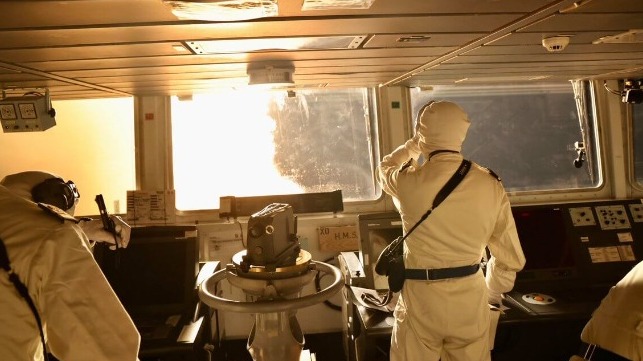After Encountering Ballistic Missiles, Royal Navy Upgrades Air Defenses

The UK Ministry of Defence has announced a long-awaited $500 million upgrade to the Sea Viper missile system, which is fielded on the UK's premier air defense destroyer. The upgrade is aimed at improving capability against ballistic missile threats, and it is timely: the award follows just weeks after the Royal Navy's first encounter with live antiship ballistic missiles.
The Royal Navy Type 45 destroyer HMS Diamond has been deployed in the Red Sea since December to protect merchant shipping from Houthi militant attacks. Diamond has used her Sea Viper missile system to shoot down Houthi attack drones several times, including seven drones in one night on January 9. It was the most intense air-defense engagement that the Royal Navy has encountered since the Falklands conflict, according to UK naval affairs outlet Navy Lookout.
The same engagement saw allied U.S. Navy warships shoot down one anti-ship ballistic missile fired from Yemen. American forces have engaged and destroyed multiple ASBMs launched by Houthi militants, and others have gone into the water without causing harm. Despite the U.S. air defense envelope, at least one appears to have found its target: an ASBM hit the bulker Zografia near Bab el-Mandeb earlier this month, puncturing the hull between the waterline and the boot top.
The Royal Navy says that the upgrades to Sea Viper will allow HMS Diamond and her five sister ships to also "intercept the latest anti-ship ballistic missile threats," like those recently encountered in the Red Sea. (The U.S. Navy's existing Aegis system has this capability, in combination with the SM-3 air defense missile.)
HMS Diamond also used her guns to down incoming drones in the January 9 "wave" of Houthi attacks, according to the Royal Navy, suggesting at least one close-range engagement. In the future, this work could fall to a laser weapon instead. The UK's defense research lab recently test-fired its Dragonfire solid-state laser at a facility in the Hebrides, bringing down multiple drone targets. It has limitations - it won't fit on a Type 45, and it needs to hold on target for 10 seconds to have an effect - but the cost per shot is just a few dollars, compared to millions for the Sea Viper.
